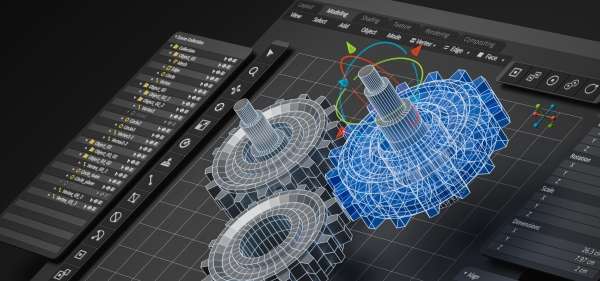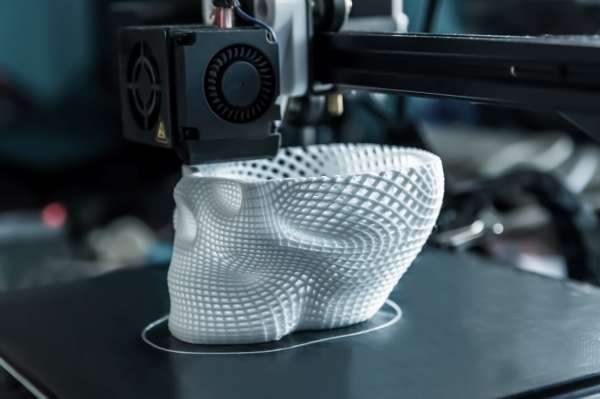
Model-making is the process of creating a scaled representation of an object or system, typically used to visualise and test its design before it is built or produced. It involves using various materials and techniques to create a three-dimensional model that accurately represents the desired form, function, and features of the final product.
By creating a physical model, designers can analyse and refine their designs from multiple angles, identify potential problems, and make necessary adjustments before investing time and resources into building a full-scale prototype.
In this article, we will delve deeper into the world of model-making, exploring its history, applications, and significance in various industries. We will discuss the different types of models, materials, and techniques used in model-making, as well as the benefits and challenges associated with this process.
Turning Inspiration into Existence
Models play a vital role in turning ideas into physical form, allowing designers to see their concepts take shape before their eyes. Creating a tangible representation of an idea enables designers to test its feasibility, identify potential flaws, and refine their design before investing in full-scale production. This not only saves time and resources but also helps ensure that the final product meets the intended requirements and functions as intended.
Moreover, models offer a way to communicate complex ideas simply and intuitively, making it easier for stakeholders to understand and appreciate the design. For instance, architects use models to showcase their building designs to clients, giving them a better understanding of the layout, proportions, and overall aesthetic. Product designers, on the other hand, use models to test the usability and functionality of their creations, ensuring that they meet the needs of their target audience.
Throughout history, models have brought imaginative ideas to life, transforming mere concepts into functional realities. For example, Leonardo da Vinci’s famous flying machine model paved the way for modern aviation, while Frank Lloyd Wright’s intricate architectural models helped him sell his revolutionary designs to clients.
Testing and Refining Designs
Prototyping is a crucial step in the design process, enabling designers to test and refine their ideas before investing in full-scale production. Models serve as a means of prototyping, allowing designers to evaluate the functionality, durability, and aesthetics of their designs. By creating a physical representation of their ideas, designers can identify potential issues and make necessary modifications early on.
Models permit designers to put their concepts through various tests, such as user testing, stress testing, and usability testing. These tests help designers gather feedback, identify areas for improvement, and fine-tune their designs. For instance, a product designer may create a prototype of a new chair and test its comfort level, stability, and durability under different weights and conditions.
Moreover, models have helped designers identify and solve problems that might have been difficult to detect in the initial stages of design. For example, an architect may build a scale model of a building and realise that the structure’s weight distribution is uneven, leading to concerns about stability. The designer can then address these issues by modifying the model and testing it again until the problem is resolved.
Communicating Ideas Effectively

One of the biggest challenges designers face is communicating their abstract ideas effectively to stakeholders. It can be difficult to convey the vision, functionality, and details of a design without a clear and concise way to demonstrate it. This is where models come in – they provide a physical or digital representation of a design concept, allowing designers to communicate their ideas in a more tangible and accessible way.
By using models, designers can clarify and communicate their designs to stakeholders, helping them to visualise and understand the end result. For example, an architect can use a 3D model of a building to showcase its layout, features, and surroundings, giving investors a clearer picture of what the finished product will look like. Similarly, a product designer can use a prototype to demonstrate the functionality and user experience of a new device, helping investors grasp its potential and value.
Real-World Applications of Model Making
- Building models: These help architects and designers visualise and communicate their ideas to clients and stakeholders. They can also be used to test and refine building designs, ensuring that they meet the needs of users and comply with regulations.
- Urban planning models: These allow urban planners and policymakers to understand and analyse the impact of development projects on cities and towns. They help identify potential issues and opportunities, enabling informed decision-making.
- Landscape architecture models: These showcase the relationship between buildings and their surrounding environments. They help landscape architects and designers balance aesthetics, function, and sustainability, creating spaces that are both beautiful and functional.
Product Design
- Prototype models: These are used to test and refine product functionality. They help designers validate their ideas, identify areas for improvement, and ensure that the final product meets user needs.
- Functional models: These demonstrate how a product works, highlighting its key features and benefits. They are often used in marketing and sales efforts to help potential customers understand the value proposition of a product.
- Presentation models: These are designed to showcase products to potential investors or customers. They are typically made to impress, with attention to detail and finish.
Film and Gaming
- Movie prop models: These are created for movies and television shows to enhance the believability and immersion of scenes. They can range from simple objects to intricate sets and vehicles.
- Video game environment models: These are used to create immersive gaming experiences. They include terrain, buildings, and other elements that players interact with during gameplay.
- Character models: These are used to create lifelike digital characters that interact with players or audience members. They require careful attention to detail and animation to achieve realistic movements and expressions.
The Evolution of Model Making

The evolution of model-making has been shaped by technological advancements, transforming traditional techniques and introducing new methods that have revolutionised the field. Traditional model-making techniques involved manual craftsmanship, using materials such as wood, clay, and plaster to create physical models. These methods allowed for great precision and detail but were time-consuming and limited in scale.
The advent of computer-aided design (CAD) software in the 1980s marked a significant turning point in model making. CAD enabled designers to create accurate digital models, which could be easily modified and manipulated. This shifted the focus from manual labour to digital precision, allowing for faster turnaround times and increased accuracy.
The rise of 3D printing in the 1990s further transformed the field. 3D printing enables the creation of physical models directly from digital files, eliminating the need for moulds or tooling. This technology allows for rapid prototyping, reducing production time and costs. Today, 3D printing is widely used in various industries.
Conclusion
Model-making has proven to be a powerful tool for creatives, offering numerous benefits such as visualisation, problem-solving, and communication. With the integration of technology, model-making has become more accessible and efficient than ever before. As the field continues to evolve, we can expect to see even more innovative applications of model-making in various industries. From architecture to product design, art, and beyond, model-making remains an essential part of the creative process, helping bring ideas to life in a tangible and meaningful way.